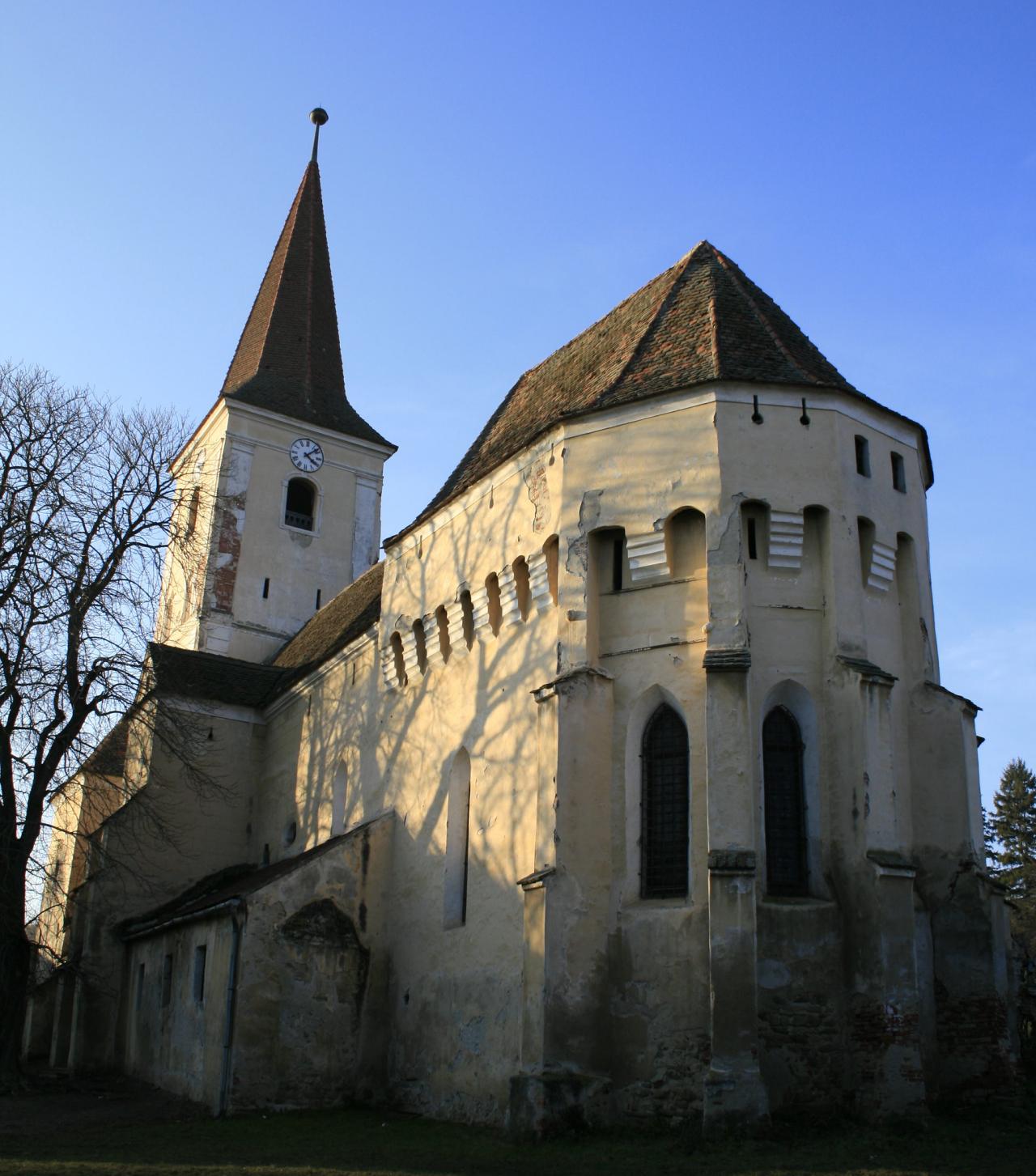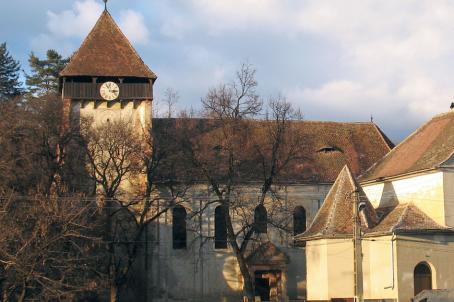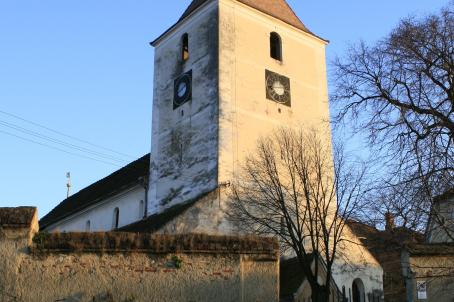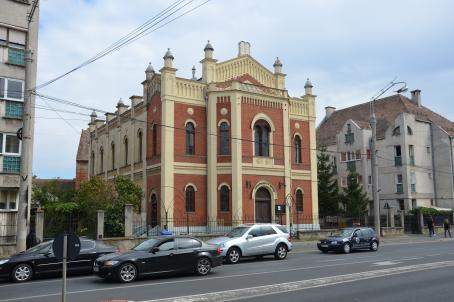Şura Mare Fortified Church

The church, which still preserves many parts of the former Romanesque basilica, was built during the 13th century and fortified in Gothic style in the 15th century. In the same time the Romanesque chancel was heightened by adding a defence level, a lierne vault was built above the nave and a ribbed vault in the chancel. During its fortification phase the side aisles of the western tower were replaced by turrets, which were demolished later on. Its defence level was also replaced in 1854 by the current spire.
The interior is decorated with lively colored galleries. The painted pews in the aisles were brought here for security reasons from the church in Drăuşeni. grossscheuern2016_portalAlmost nothing remained from the defence wall that was once surrounding the assembly.
About this building
For more information visit on this building visit https://kirchenburgen.org/en/location/grossscheuern-sura-mare/





